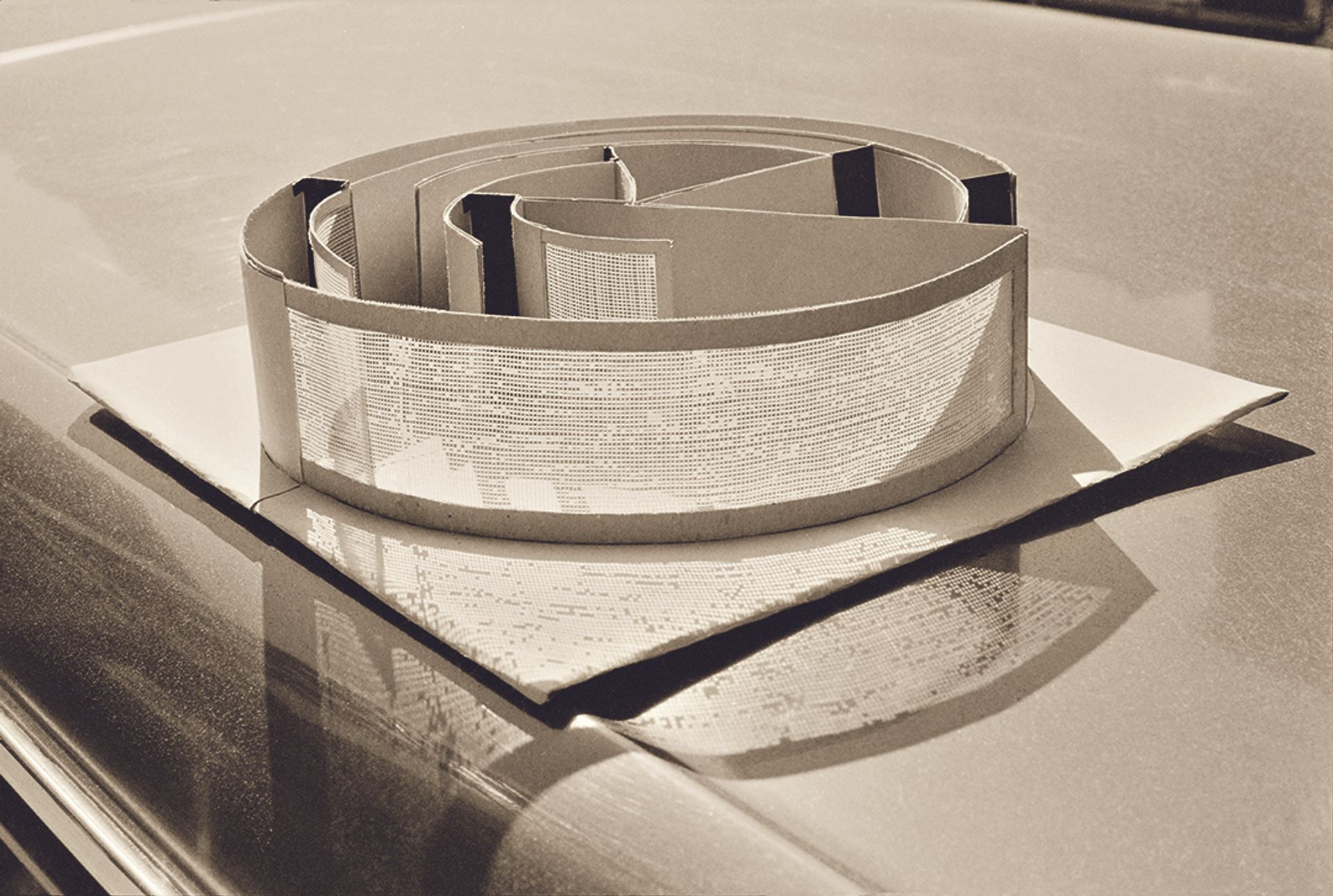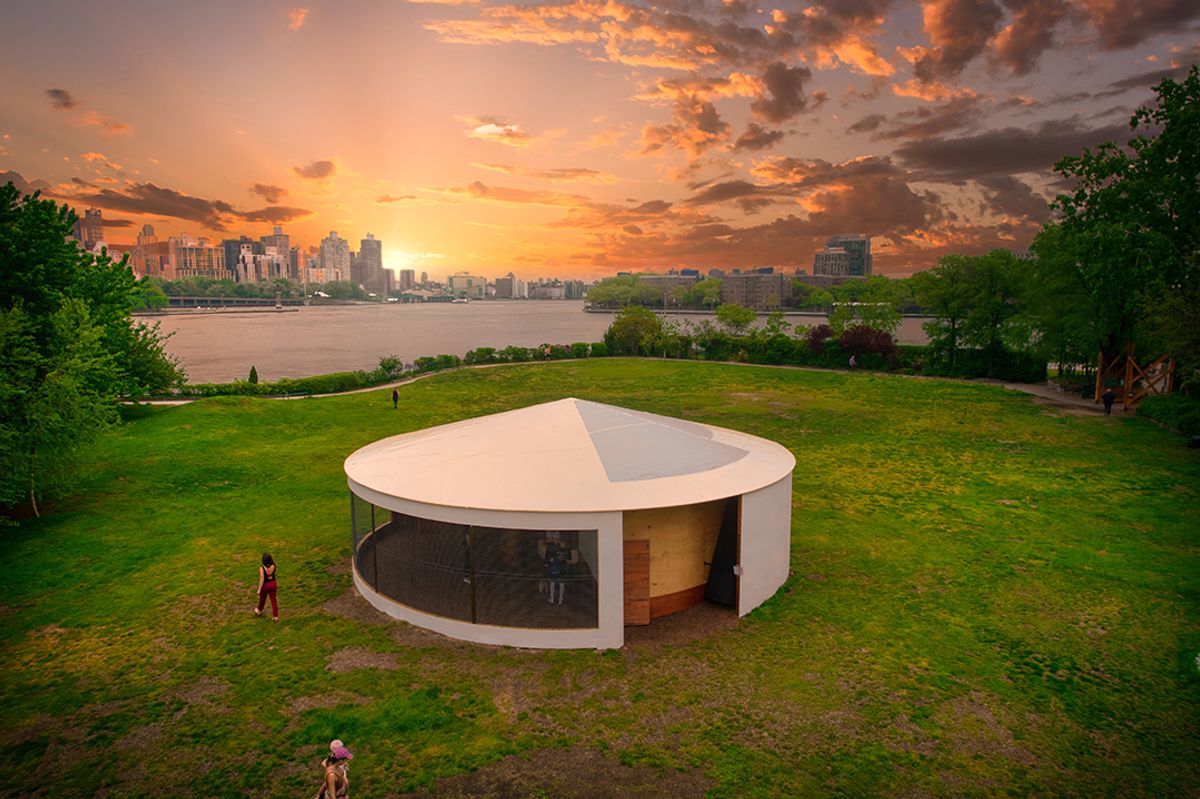It’s the last week to see Hélio Oiticica’s Subterranean Tropicália Projects: PN15 (1971/2022), an environment that the late Brazilian artist envisioned for Central Park but struggled to fund, which has been posthumously built at the Socrates Sculpture Park in Queens. The labyrinthine work, realised more than five decades after Oiticica conceived it, is the first major public project by the artist to be shown in the US.
It comprises a circular structure irregularly sectioned by curved wooden panels, steel, wire mesh and curtains, and a projection video series that has changed throughout the exhibition, featuring films by Oiticica and other Brazilian and queer artists.
Oiticica traveled to New York in 1970 to participate in the exhibition Information at the Museum of Modern Art, the first major museum exhibition focused on international Conceptualism. He returned the same year after receiving a Guggenheim Foundation grant for a proposal dealing with what he described as “poly-sensorial” art, or environments that could be entered and activated as creative centres.
He settled in the East Village and worked on the concept for Subterranean Tropicália Projects, a series of models for enterable environments meant for public spaces, for most of the year that followed. However, his requests for funding—first for the construction of the work, and later for funding of a publication in lieu of the physical installation—were both denied.

Maquette for Subterranean Tropicália Projects: PN15 Penetrable (1971). Photo: Miguel Rio Branco, © César and Claudio Oiticica.
Instead, Oiticica created several scaled-down models, which were “cheaper, beautiful, better synthesised and easier to manage”, he wrote at the time. The following year, he also noted that he did not manage to get the proper contacts and means to see the project through. He abandoned the Subterranean Tropicália Projects and began to shift his focus from architecture to writing and filmmaking.
Several plans for Subterranean Tropicália Projects were published in the cultural magazine Changes in 1972, and the project remained a mythical facet of Oiticica’s career. It was featured prominently in the traveling retrospective Hélio Oiticica: To Organise Delirium, which made stops at the Carnegie Museum of Art, the Art Institute of Chicago and the Whitney Museum of American Art between 2016 and 2017.
The project has been realised by the America’s Society and Socrates Sculpture Park in close collaboration with the artist’s estate, which is represented by Lisson Gallery. It closes 14 August with a clay workshop with the artist Bel Falleiros.
- Hélio Oiticica’s Subterranean Tropicália Projects: PN15, until 14 August at Socrates Sculpture Park, Queens


